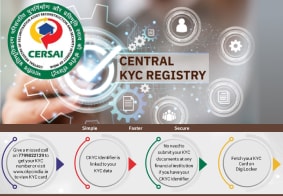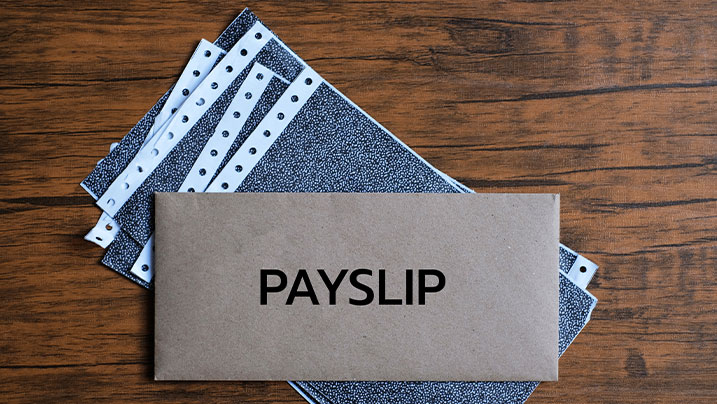CKYC Registry
-
Customer Service Contact us Service request Locate a branch
Find all the help you need
Scan the QR, get our app, and find help on your fingertips

Help CenterSupport topics, Contact us, FAQs and more
-
Login
Are you ready for an upgrade?
Login to the new experience with best features and services
-
Login
Are you ready for an upgrade?
Login to the new experience with best features and services
- Accounts
-
Deposits
IDFC FIRST Bank Deposits
View all Deposits -
Loans
IDFC FIRST Bank Loans
View all Loans - Wealth & Insure
-
Payments
IDFC FIRST Bank Payments
View all Payments -
Cards
IDFC FIRST Bank Cards
View all Cards - Blogs
- Corporate Account
-
Cash Management Services
IDFC FIRST Bank Cash Management Services
View all Cash Management Services - Supply Chain Finance
-
Corporate Lending
IDFC FIRST Bank Lending
View all -
Treasury
IDFC FIRST Bank Treasury
See more details - NBFC Financing
Support topics, Contact us, FAQs and more
- IDFC FIRST Bank Accounts
-
Savings Account
-
Corporate Salary
Account -
Senior Citizens
Savings Account -
First Power
Account -
Current Account
-
NRI Savings
Account -
TASC Institutional
Account -
Savings Account
Interest Calculator
- IDFC FIRST Bank Deposits
-
Fixed Deposit
-
Recurring Deposit
-
NRI Fixed Deposit
-
Safe Deposit Locker
-
FD Calculator
-
RD Calculator
- IDFC FIRST Bank Loans
-
Personal Loan
-
Consumer Durable
Loan -
Home Loan
-
Business Loan
-
Professional Loan
-
Education Loan
-
New Car Loan
-
Pre-owned Car Loan
-
Two Wheeler Loan
-
Pre-owned Two
Wheeler Loan -
Commercial Vehicle
Loan -
Gold Loan
-
Loan Against Property
-
Loan Against Securities
-
Easy Buy EMI card
-
Personal Loan
EMI Calculator -
Education Loan
EMI Calculator -
Home Loan
EMI Calculator
- IDFC FIRST Bank Wealth & Insure
-
FIRST Select
-
FIRST Wealth
-
FIRST Private
-
Mutual Funds
-
Sovereign Gold Bond
-
Demat Account
-
Term Insurance
-
Life Insurance
-
Health Insurance
-
General Insurance
-
Bonds
-
Loan Against
Securities -
Portfolio Management
Service
- IDFC FIRST Bank Payments
-
FASTag
-
Credit Card
Bill Payments -
UPI
-
Funds Transfer
-
Forex Services
-
Pay Loan EMI
- IDFC FIRST Bank Cards
-
Ashva :
Metal Credit Card -
Mayura :
Metal Credit Card -
FIRST Millennia
Credit Card -
FIRST Classic
Credit Card -
FIRST Select
Credit Card -
FIRST Wealth
Credit Card -
FIRST WOW!
Credit Card -
Deals
-
Debit Cards
-
Co-branded Cards
-
Credit Card
EMI Calculator -
FIRST Corporate
Credit Card -
FIRST Purchase
Credit Card -
FIRST Business
Credit Card
- Premium Metal Credit Cards
-
AshvaLifestyle1% Forex₹2,999
-
MayuraLifestyleZero Forex₹5,999
-
FIRST PrivateInvite Only
- Best for travellers
-
MayuraZero ForexMetal₹5,999
-
Ashva1% ForexMetal₹2,999
-
FIRST WOW!Zero ForexTravelLifetime Free
-
FIRST SWYPTravel OffersEMI₹499
-
FIRST Select1.99% ForexLifestyleLifetime Free
-
FIRST Wealth1.5% ForexLifestyleLifetime Free
-
Club VistaraTravelLifestyle₹4,999
-
IndiGo IDFC FIRST Dual Credit CardTravelLifestyle₹4,999
- Max benefits, Free for life
-
FIRST Classic10X RewardsShoppingNever Expiring Rewards
-
FIRST Millennia10X RewardsShoppingNever Expiring Rewards
-
FIRST Select10X RewardsLifestyle1.99% Forex
-
FIRST Wealth10X RewardsLifestyle1.5% Forex
-
FIRST WOW!RewardsTravelZero Forex
-
LIC ClassicRewardsInsuranceShopping
-
LIC SelectRewardsInsuranceShopping
- Reward Multipliers
-
AshvaLifestyleMetal₹2,999
-
MayuraLifestyleZero Forex₹5,999
-
FIRST ClassicNever Expiring RewardsShoppingLifetime Free
-
FIRST MillenniaNever Expiring RewardsShoppingLifetime Free
-
FIRST SelectNever Expiring RewardsLifestyleLifetime Free
-
FIRST WealthNever Expiring RewardsLifestyleLifetime Free
- Rewards & Credit on UPI
-
FIRST Power+FuelUPI₹499
-
FIRST PowerFuelUPI₹199
-
FIRST EA₹NVirtual1% Cashback₹499
-
FIRST DigitalVirtualUPI₹199
-
IndiGo IDFC FIRST Dual Credit CardUPITravelDual cards
- Fuel and Savings
-
FIRST PowerRewardsUPI₹199
-
FIRST Power+RewardsUPI₹499
-
LIC ClassicRewardsInsuranceShopping
-
LIC SelectRewardsInsuranceShopping
- Express and Flaunt
-
AshvaMetal1% Forex₹2,999
-
MayuraMetalZero Forex₹5,999
-
FIRST SWYPEMIOfferMAX₹499
-
FIRST MillenniaRewardsShoppingLifetime Free
- FD Backed rewarding Credit Cards for all
-
FIRST EA₹NVirtualCashback₹499
-
FIRST WOW!Zero ForexTravelLifetime Free
-
CreditPro Balance TransferTransfer & SaveReduce InterestPay Smartly
- IDFC FIRST Bank NRI Forex Solutions
-
Send money to India-Wire transfer
-
Send money to India-Digitally
-
Send money abroad
-
Max Returns FD (INR)
- IDFC FIRST Bank MSME Accounts
-
Platinum Current
Account -
Gold
Current Account -
Silver Plus
Current Account -
Merchant Multiplier
Account -
Agri Multiplier
Account -
TASC Institutional
Account -
Dynamic Current
Account -
World business
Account -
First Startup
Current Account
- IDFC FIRST Bank Business Loans
-
Business Loan
-
Professional Loan
-
Loan Against Property
-
Business Loan for Women
-
Working Capital Loan
-
Construction Equipment Loan
-
Machinery Loan
-
Healthcare Equipment Loan
- IDFC FIRST Bank Business Solutions
-
Payment Solutions
-
Tax Payments
-
Doorstep Banking
-
Point of Sale (POS)
-
Escrow Accounts
-
NACH
-
Payment Gateway
-
UPI
-
Virtual Accounts
-
As per amendment in the Income Tax Rules, PAN or Aadhaar are to be mandatorily quoted for cash deposit or withdrawal aggregating to Rupees twenty lakhs or more in a FY. Please update your PAN or Aadhaar. Kindly reach out to the Bank’s contact center on 1800 10 888 or visit the nearest IDFC FIRST Bank branch for further queries.
-
-
Most Searched
Sorry!
We couldn’t find ‘’ in our website
Here is what you can do :
- Try checking the spelling and search
- Search from below suggestions instead
- Widen your search & try a more generic keyword
Suggested
Get a Credit Card
Enjoy Zero Charges on All Commonly Used Savings Account Services
Open Account Now
Understanding CTC in Salary: What you need to know
Key Takeaways
CTC reflects the full value of your employment package.
Analysing your CTC allows you to plan better for savings, investments, and expenses without any last-minute surprises.
Choosing a high-interest Salary Account like that offered by IDFC FIRST Bank, helps your earnings work harder for you and supports your long-term financial growth.
If you have just received a job offer or are preparing to switch roles, chances are you have come across the term ‘CTC’ in your offer letter. For many, especially first-time earners, understanding what CTC actually means can be a bit confusing. Companies often present a large figure in their job offers, but the actual amount credited to your bank account each month might be different.
So, what exactly is CTC? Let’s break down the meaning, full form, and important components of CTC so you know exactly what to expect.
READ MORE
What is CTC in salary?
CTC stands for Cost to Company. Simply put, it refers to the total amount a company spends on an employee in a year. This includes not only the basic salary but also various benefits and allowances, such as health insurance, bonuses, and other perks.
However, it is crucial to understand that CTC is not the take-home salary. Some parts are paid directly as salary, while others come in the form of perks or long-term savings. Essentially, CTC reflects the company’s total investment in you, not just what you take home each month.
How to calculate CTC (Cost to Company)?
Calculating CTC involves adding all fixed and variable components offered by the employer. It often looks like this:
Cost to Company = Gross salary + direct benefits + indirect benefits
Direct benefits: These benefits in an individual’s salary include their net wages, reimbursements, and other compensations.
Indirect benefits: Employees receive these in the form of insurance coverage, medical cover, and more. Since these are an expense to the company, they are added to the CTC.
Savings and contributions: In addition to the direct and indirect benefits, companies also offer savings constituents such as EPF, gratuity, and more. Usually, these components are offered in a lump sum at the time of retirement or employment termination.
Key components of CTC - Cost to Company
Take a closer look at some major elements of CTC:
A. Fixed salary components
Basic salary
It is the base salary your company pays you as an employee. It doesn’t cover bonuses, incentives, or extras. When your employer offers a salary increase, it usually applies to your basic salary.
House Rent Allowance (HRA)
HRA is a component of the salary that helps you pay for your accommodation. Almost all employers have an HRA component in their salary structure.
Special allowances
Employers usually add special allowances to the CTC package, which may include performance bonuses, fixed allowances such as mobile or travel reimbursements, and benefits like meal vouchers.
B. Variable pay and performance-linked bonuses
Incentives or bonuses
Performance-linked bonuses, festival bonuses, and sales incentives fall under this head. Although they boost your total earnings, many bonuses are not fixed and depend on your or the company's performance.
Leave Travel Allowance/Leave Travel Concession (LTA/LTC)
These benefits cover travel expenses incurred by employees while on leave. LTA and LTC reimburse the cost of domestic travel for the employee and, in some cases, their family members.
C. Other perks and allowances
Phone and internet allowance
This element of the CTC covers expenses related to mobile and internet services used for work purposes. Many employers include this as part of the salary package to support remote working or official communication needs.
Indirect elements
Your CTC could also have some indirect benefits. These could increase your CTC, but not necessarily your in-hand salary. For instance, if you have taken a loan from your employer, it could be added to your CTC. However, do note that not every employer is obliged to offer a loan when you need one.
At IDFC FIRST Bank, you can get a personal loan and benefit from a fast and easy process. Click here, fill out your details, and apply for a personal loan. If you meet the eligibility criteria, you will receive the loan amount within hours. Further, you can keep track of your loan payments with the IDFC FIRST Bank Mobile Banking App.
Conveyance allowance
Employers also provide a conveyance allowance to help cover your daily travel expenses between home and work. It might be a fixed amount each month or a percentage of your basic salary.
Medical allowance
Medical allowance is a fixed sum included in the salary package, given by employers to help cover medical expenses. It is paid to employees regardless of whether they actually incur any medical costs.
D. Retirement benefits
A major part of CTC includes the employer’s contribution to the Employee Provident Fund (EPF). Companies are required to deposit 12% of the basic salary into the EPF account. This amount builds a savings fund for employees, which they can withdraw after retirement or under specific conditions. Although it adds to the overall CTC, it does not get added to the monthly take-home salary.
House Rent Allowance (HRA) provides tax benefits if you live in a rented accommodation and pay monthly rent.
What is gross salary?
Gross salary combines the total earnings you are eligible for before voluntary deductions are made (e.g., taxes, insurance premiums, employee welfare deductions). It includes your basic salary with all benefits, allowances, and other entitlements.
What is net salary?
Net salary, often called take-home salary, is the amount credited to your bank account every month after all deductions.
For example, if your gross salary is ₹7 lakh per annum but your annual deductions total as ₹1 lakh, your net salary would be ₹6 lakh per annum. In monthly terms, that works out to around ₹50,000.
Difference between CTC, gross salary & net salary
Here are some critical differences between CTC, gross salary, and net salary:
Aspect |
CTC |
Gross salary |
Net salary |
Meaning |
Total company expense per employee |
Earnings before tax and deductions |
Actual in-hand salary |
Examples |
₹8 lakh CTC = ₹6 lakh gross + ₹2 lakh employer benefits |
₹6 lakh gross (includes retirement benefits, bonuses, insurance, tax, and other benefits) |
In-hand money after subtracting all applicable deductions |
As you can see, the CTC includes direct, indirect, and savings benefits, whereas the gross salary is your total income before taxes and deductions. It is the net salary that reflects your actual earning potential.
Conclusion
CTC represents everything your employer is investing in you, both in cash and kind. However, only a part of it translates into your monthly earnings. So, before accepting a job offer, always look beyond the CTC figure. Understand what benefits are included, calculate your expected gross salary, and, most importantly, know your net take-home pay to make better financial decisions.
Now, while it is important to learn the components of your salary structure, you must also choose a safe venue to park your salary and protect it from devaluing due to inflation. With a Corporate Salary Account from IDFC FIRST Bank, you can earn one of the most competitive interest rates in the industry. With free general banking services, unlimited free ATM withdrawals, and monthly interest credits, your salary not only stays protected but also steadily compounds in value.
The features, benefits and offers mentioned in the article are applicable as on the day of publication of this blog and is subject to change without notice. The contents herein are also subject to other product specific terms and conditions and any third party terms and conditions, as applicable. Please refer our website www.idfcfirstbank.com for latest updates.























